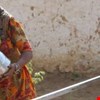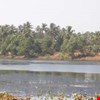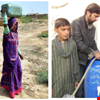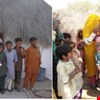
The city of Jabalpur experienced water shortages. Action was taken through a scheme, which would augment the water supply to the city, by substantially increasing funding. The key lesson is how an empowered local body can respond to water challenges in a successful manner.

Providing safe drinking water to poor families is a critical development issue of India. To address the common outbreaks of water borne diseases, the Naandi foundation together with Water Health India initiated the pilot rural Community Safe Water Scheme that combines cost-effective water purification technology with community-driven and performance-based approach. This case illustrates that with awareness raising campaigns, rural households are willing to pay for clean drinking water.

The Upper Veda Project involves a dam that would submerge 14 villages. Opposing the project, the affected communities took action and urged for alternative solutions. The dam was eventually constructed, but the process was characterised by conflicts between the project authorities and the communities. This case illustrates that dam projects, which directly affect the livelihoods of large numbers of people, need to have developed a well defined rehabilitation plan prior to construction.


Jharkhand is a new state, established in 2000, to support the rights of indigenous people to have a separate state for themselves. Jharkhand is home to many of the country’s poorest people, despite the city being located in one of the richest areas of India in terms of minerals and natural resources. Agriculture, as the sole economic activity in the area, has not been properly developed (e.g. water facilities are poor and access to upgraded and modern agriculture-based knowledge is limited) and the land is prone to severe droughts, marked only by erratic rainfalls. Therefore, starvation and malnutrition of its citizens is widespread.

To improve the state of the Balikpapan Bay coastal ecosystem, a coastal zone management project was initiated. After initial project failure, action was taken for policy reform and an adaptive management approach was developed, focusing on inter-agency integration. This case illustrates the importance of active project learning and adaptive management.

The Cholistan Desert area is one of the largest deserts in Pakistan and is home to a semi-nomadic population and their livestock. The primary source of income for Cholistan is cattle breeding. The climate of the desert area, with scanty and unpredictable rainfall as well as long periods of drought, makes water a limited resource. To address the issue of water shortages and to secure access of water to livestock, the people of Cholistan have created water ponds, called “tobas”. However, due to their vulnerability to extreme weather conditions and infiltration, the ponds storage capacities are low. There are around 1500 water points (tobas) in the entire desert out of only 500 were in running condition. Most tobas are not constructed in proper places because their present localities have not been identified on scientific basis to receive maximum rainwater.

Floods are a recurrent natural calamity in Pakistan, followed by earthquakes, cyclones and drought. However, drought is more damaging than floods in terms of food insecurity. Evidence of chronic water shortages have been painfully evident in some parts of Pakistan in recent years, due to low rainfall and extreme variations in temperature.

The Tsurumi River Basin, located in the suburbs of Tokyo, extends over an area of 235 km2 and a river length of 42.5km. The Tsurumi River Basin is regarded as one of the most important and representative river basins in Japan. The basin was largely developed by the rapid urbanization since the 1960s.

Water management in Kazakhstan was previously characterised by a command and control approach. The Water Code was adopted in 2003 as an answer to these problems. Furthermore, a project was launched to evaluate the current state of the legal framework for IWRM and to identify the potential for improvements and propose amendments to the Water Code. It is evident that IWRM is a complex approach and any amendments need to be done holistically.